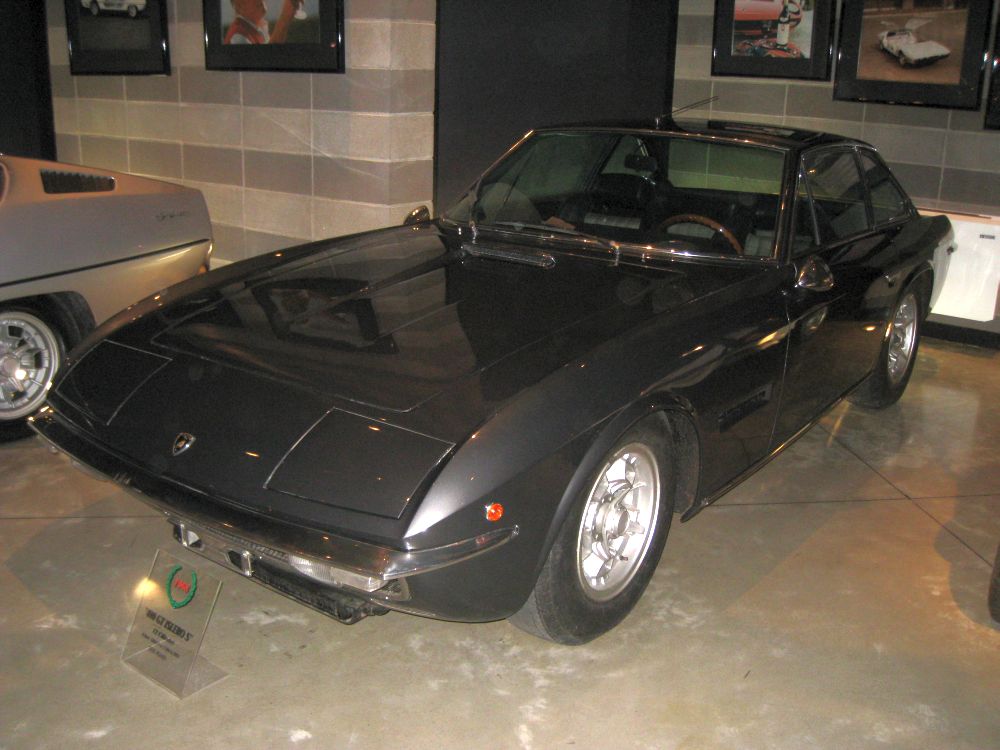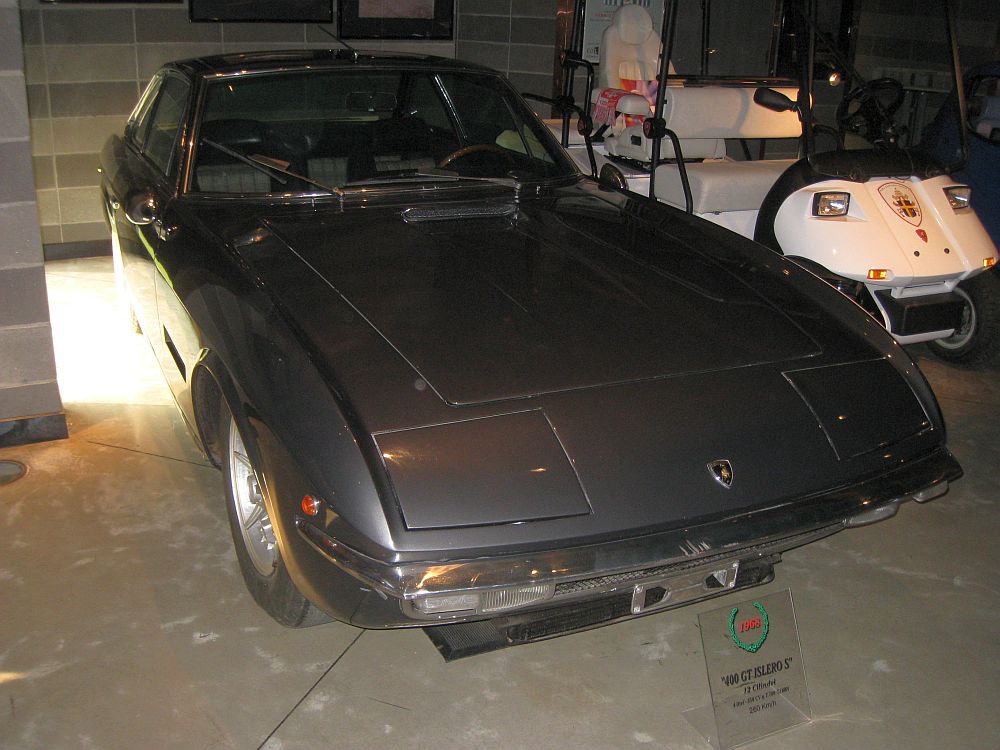Description
The Lamborghini Islero S 400 GT, introduced in 1969, was the refined and more powerful evolution of the original Islero 400 GT 2+2. Subtle in appearance but significantly improved in performance and comfort, the Islero S represented the final expression of Lamborghini’s classic front-engined V12 grand touring lineage before the company’s focus shifted entirely to its mid-engined supercars. Combining understated Italian design with exceptional mechanical sophistication, it was Ferruccio Lamborghini’s personal favorite—a car that perfectly embodied his vision of what a true grand tourer should be: fast, elegant, comfortable, and effortless.
The Islero S was built on the same tubular steel chassis as its predecessor, retaining the mechanical architecture that had proven both durable and well-balanced. Under the long, low bonnet sat Lamborghini’s legendary 3,929 cc all-aluminium V12 engine, designed by Giotto Bizzarrini and refined in-house by Lamborghini’s engineers. In the S version, output increased from 325 to 350 horsepower at 7,000 rpm, achieved through revised camshaft profiles, higher compression, and improved carburetion. Torque delivery was smooth and strong across the rev range, giving the car an even broader band of usable power. Paired with Lamborghini’s five-speed manual gearbox and a Salisbury limited-slip differential, the Islero S could accelerate from 0 to 100 km/h (62 mph) in around 6.2 seconds and reach a top speed of approximately 260 km/h (162 mph).
The chassis and suspension setup were designed for both comfort and precision. Fully independent double wishbone suspension at all four corners, with coil springs and telescopic dampers, gave the Islero S a composed and supple ride. The car handled with impressive balance, its steering light yet communicative, and its road manners refined at any speed. Girling ventilated disc brakes provided reliable stopping power, while subtle changes to the spring rates and damping made the car more stable and comfortable over long distances.
Stylistically, the Islero S retained the clean, restrained design of the original, penned by Mario Marazzi, but featured a number of carefully executed updates. The bodywork, hand-built in aluminium by Carrozzeria Marazzi, gained slightly flared wheel arches, wider tires, and a more prominent front air intake for better cooling. The side windows were reshaped to improve visibility, and the headlamp housings were more pronounced, giving the car a subtly more aggressive stance. At the rear, the taillights were redesigned to be larger and more distinctive, while new vents on the front fenders and a lightly revised grille gave the S a touch of modernity without sacrificing its elegance.
The Islero S’s cabin was significantly upgraded to match its increased performance. The interior was more luxurious, featuring higher-quality Connolly leather, improved sound insulation, and a redesigned dashboard with an array of Veglia Borletti instruments set into a sculpted fascia. The seats were deeper and more supportive, air conditioning was made standard, and electric windows were fitted as part of the comprehensive specification. The steering wheel, a large wood-rimmed Nardi unit, and the polished metal gear lever added to the tactile sense of craftsmanship. The overall impression was one of sophistication rather than flash—a refined environment tailored to long-distance travel at high speed.
On the road, the Islero S 400 GT delivered exactly what Ferruccio Lamborghini had envisioned: immense performance without drama. The V12 was smooth and tractable, capable of pottering through town quietly yet instantly responsive when unleashed. Its acceleration was effortless, the five-speed gearbox precise and satisfying, and the car’s composure at speed remarkable. Long stretches of autostrada could be covered at 200 km/h with little more than a subdued mechanical murmur. The combination of supple suspension and rigid chassis made it as comfortable on winding roads as it was serene on long journeys.
While it was overshadowed in its day by the more flamboyant Miura, the Islero S appealed to a different kind of buyer—one who appreciated craftsmanship and discretion. It was a car for connoisseurs rather than exhibitionists. Only 100 examples of the Islero S were built between 1969 and 1970, making it one of the rarest Lamborghinis of the era. Each was hand-assembled in Sant’Agata Bolognese, reflecting the artisanal quality that characterized the company’s early years.
The Islero S marked the end of an era for Lamborghini. It was the last front-engined V12 GT before the company’s focus turned fully to mid-engined cars like the Espada, Jarama, and Countach. In many ways, it represented the purest form of Ferruccio Lamborghini’s original philosophy—a car that combined refinement, practicality, and immense performance in perfect harmony.
Today, the Lamborghini Islero S 400 GT is celebrated as a hidden gem of the marque’s early years. Collectors value it for its rarity, elegance, and mechanical sophistication, as well as for its connection to Ferruccio himself. Its restrained styling, hand-crafted finish, and glorious V12 make it one of the most rewarding grand tourers of the 1960s—an enduring symbol of Lamborghini’s commitment to power, poise, and purity of design.

